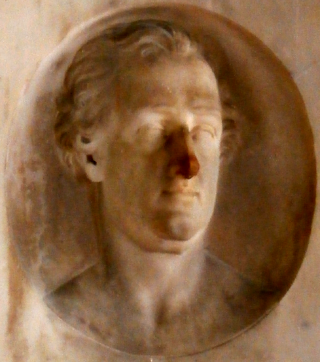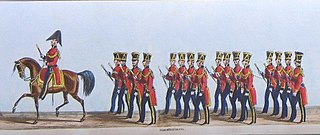
The Lord Steward or Lord Steward of the Household is an official of the Royal Household in England. Holders of the office are always peers, until 1924, were always members of the Government, and until 1782, the office was one of considerable political importance and carried Cabinet rank.
The Treasurer of the Household is a member of the Royal Household of the Sovereign of the United Kingdom. The position is usually held by one of the government deputy Chief Whips in the House of Commons. The current holder of the office is Marcus Jones MP.
The Comptroller of the Household is an ancient position in the British royal household, nominally the second-ranking member of the Lord Steward's department after the Treasurer of the Household. The Comptroller was an ex officio member of the Board of Green Cloth, until that body was abolished in the reform of local government licensing in 2004. In recent times, a senior government whip has invariably occupied the office. On state occasions the Comptroller carries a white staff of office, as often seen in portraits.
The Apothecary to the Household is an officer of the Medical Household of the Royal Household of the Sovereign of the United Kingdom. He has a salaried daily surgery.

The Cofferer of the Household was formerly an office in the English and British Royal Household. Next in rank to the Comptroller, the holder paid the wages of some of the servants above and below stairs, was a member of the Board of Green Cloth, and sat with the Lord Steward in the Court of the Verge. The cofferer was usually of political rank and always a member of the Privy Council.
The Master of the Harriers was a position in the British Royal Household, responsible for overseeing the Royal harriers. It was allowed to lapse in 1701, but was revived in 1730 as the "Master of the Harriers and Foxhounds". The position was abolished in a reorganization of the Royal Household in 1782.
The Board of Green Cloth was a board of officials belonging to the Royal Household of England and Great Britain. It took its name from the tablecloth of green baize that covered the table at which its members sat.

The King's Wardrobe, together with the Chamber, made up the personal part of medieval English government known as the King's household. Originally the room where the king's clothes, armour, and treasure were stored, the term was expanded to describe both its contents and the department of clerks who ran it. Early in the reign of Henry III the Wardrobe emerged out of the fragmentation of the Curia Regis to become the chief administrative and accounting department of the Household. The Wardrobe received regular block grants from the Exchequer for much of its history; in addition, however, the wardrobe treasure of gold and jewels enabled the king to make secret and rapid payments to fund his diplomatic and military operations, and for a time, in the 13th-14th centuries, it eclipsed the Exchequer as the chief spending department of central government.

Henry Frederick Carteret, 1st Baron Carteret PC (1735–1826), of Haynes, Bedfordshire, was Member of Parliament for Staffordshire (1757–1761), for Weobley in Herefordshire (1761–1770) and was Master of the Household to King George III 1768–1771. He was hereditary Bailiff of Jersey 1776–1826.
Gentleman of the Horse was a position in the stables department of the British Royal Court, subordinate only to the Master of the Horse. It existed from 1693 until abolished in 1782, and carried a salary of £256.

The Knight Marshal is a former office in the British Royal Household established by King Henry III in 1236. The position later became a Deputy to the Earl Marshal from the reign of King Henry VIII until the office was abolished in 1846.

Thomas Lee Dummer was an English Member of Parliament for Southampton (1737–1741) and Newport (1765–1768).

Field Marshal Sir Samuel Hulse, GCH was a British Army officer. He saw his first active duty during the Gordon Riots in June 1780 before commanding the 1st Battalion of the 1st Regiment of Foot Guards at key battles of the Flanders Campaign during the French Revolutionary Wars. He also commanded the 1st Guards Brigade at a later battle and then joined the retreat into Germany during the closing stages of the Flanders Campaign. He later took part in the Anglo-Russian invasion of Holland and then returned to England to become General Officer Commanding South East District. After completing active service in the Army, he served in the household of King George IV.
Sir Henry Firebrace was a courtier to Charles I, serving during his conflicts with Parliament throughout the era of the English Civil Wars. He later served Charles II as a Clerk of the Green Cloth and was knighted about 1685.
The Clerk Marshal was an official of the British Royal Household in the department of the Master of the Horse. From the Restoration the office was held with that of Avenor until the latter post was abolished in 1793. The office of Clerk Marshal was then combined with that of First or Chief Equerry until 1874. From 1841 the holder was a member of the Government, but the office ceased to be a political one from 1866.

The Clerk of the Acts, originally known as the Keeper of the King's Ports and Galleys, was a civilian officer in the Royal Navy and a principal member of the Navy Board. The office was created by King Charles II in 1660 and succeeded the earlier position of Clerk of the Navy(1546 to 1660). The Clerk was responsible for the organisation of Navy Office, processing naval contracts and coordinating the administrative and secretarial side of the Navy Board's work. The post lasted until 1796, when its duties were merged with that of the Second Secretary to the Admiralty later known as the Permanent Secretary to the Admiralty.

The Controller of Treasurer Accounts also called Comptroller of Treasurer Accounts was the civilian officer in the Royal Navy who was a principal member of the Navy Board initially from 1667 to 1679 and then again from 1691 until 1796, he was responsible for inspecting the accounts of the money received by and paid out of the Treasurer of the Navy's department on behalf of the Navy Board. He was based in the Navy Office

The Deputy Comptroller of the Navy was a principal member of the Navy Board of the Royal Navy who was responsible for chairing the Committee of Correspondence and managing all internal and external communications of the Navy Board from 1793 to 1816 and then again from 1829 to 1832. He was based at the Navy Office.
Anne Howard, Countess of Effingham, formerly Anne Bristow, was the second wife of Francis Howard, 1st Earl of Effingham.

John Fox (1611–1691) was Clerk of the Acatry to King Charles II, which below stairs department was responsible for meat destined for the royal tables. In 1660 the department comprised a clerk and a sergeant, appointed by royal warrant, a yeoman of the salt stores, yeomen and grooms, appointed by the Lord Steward's warrant.









